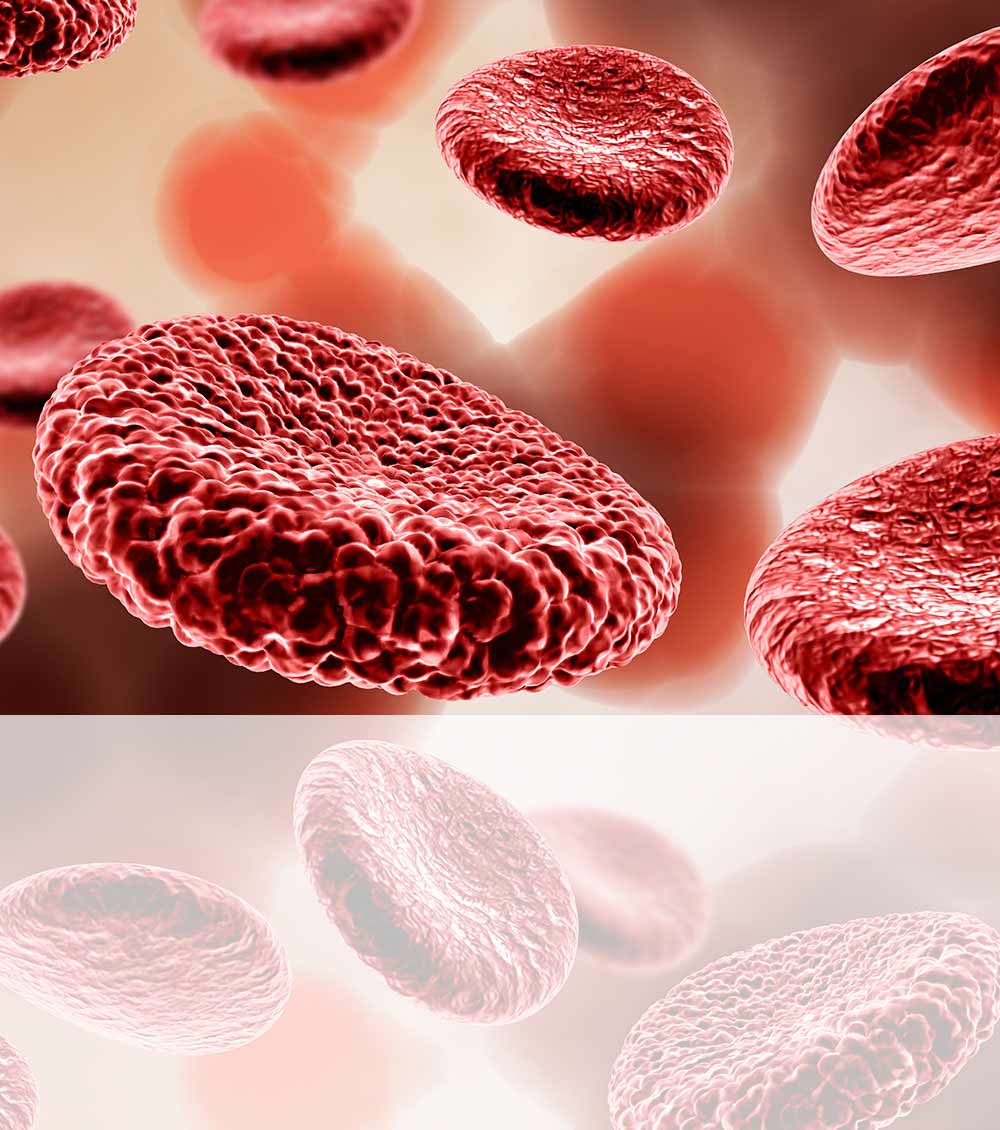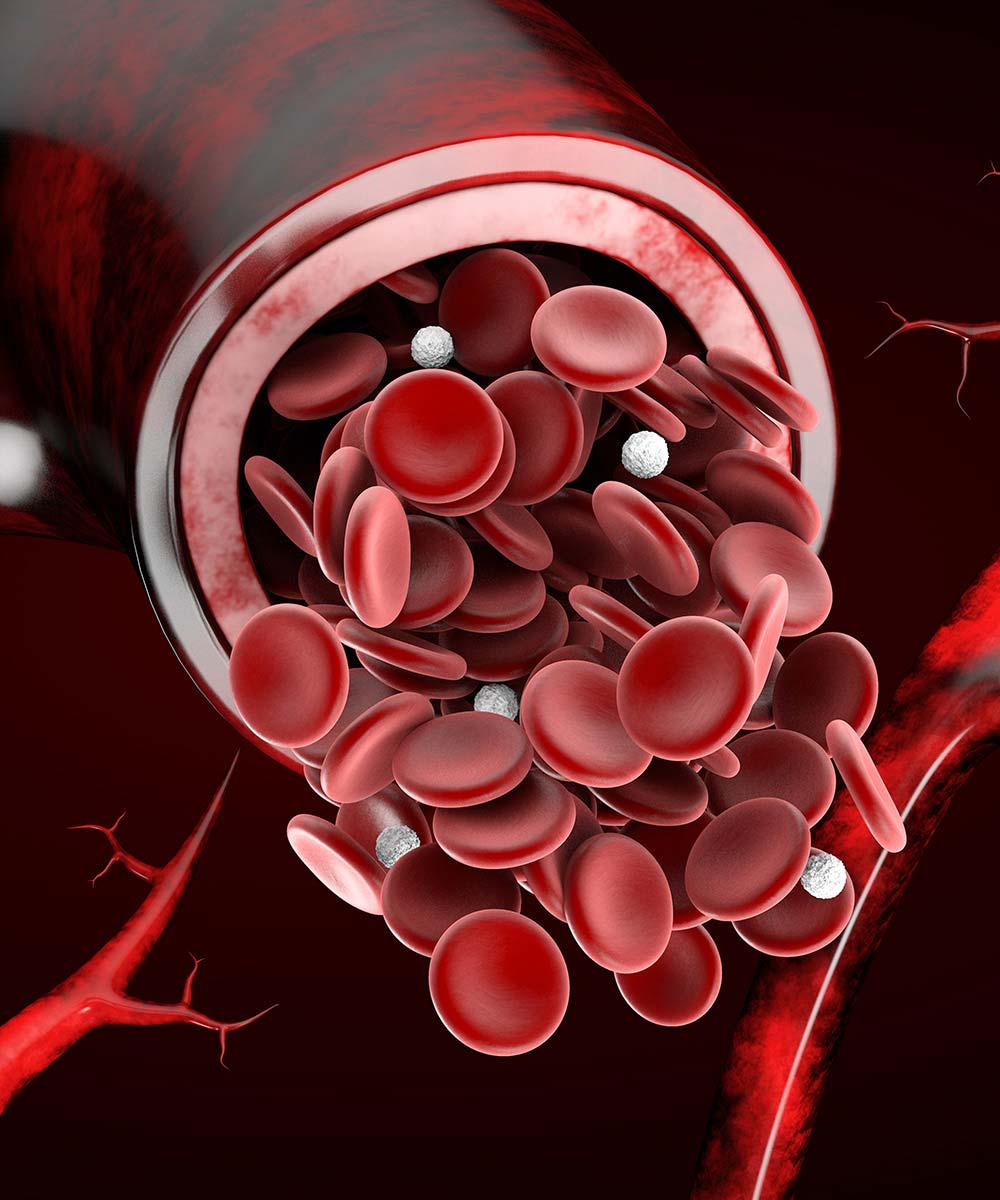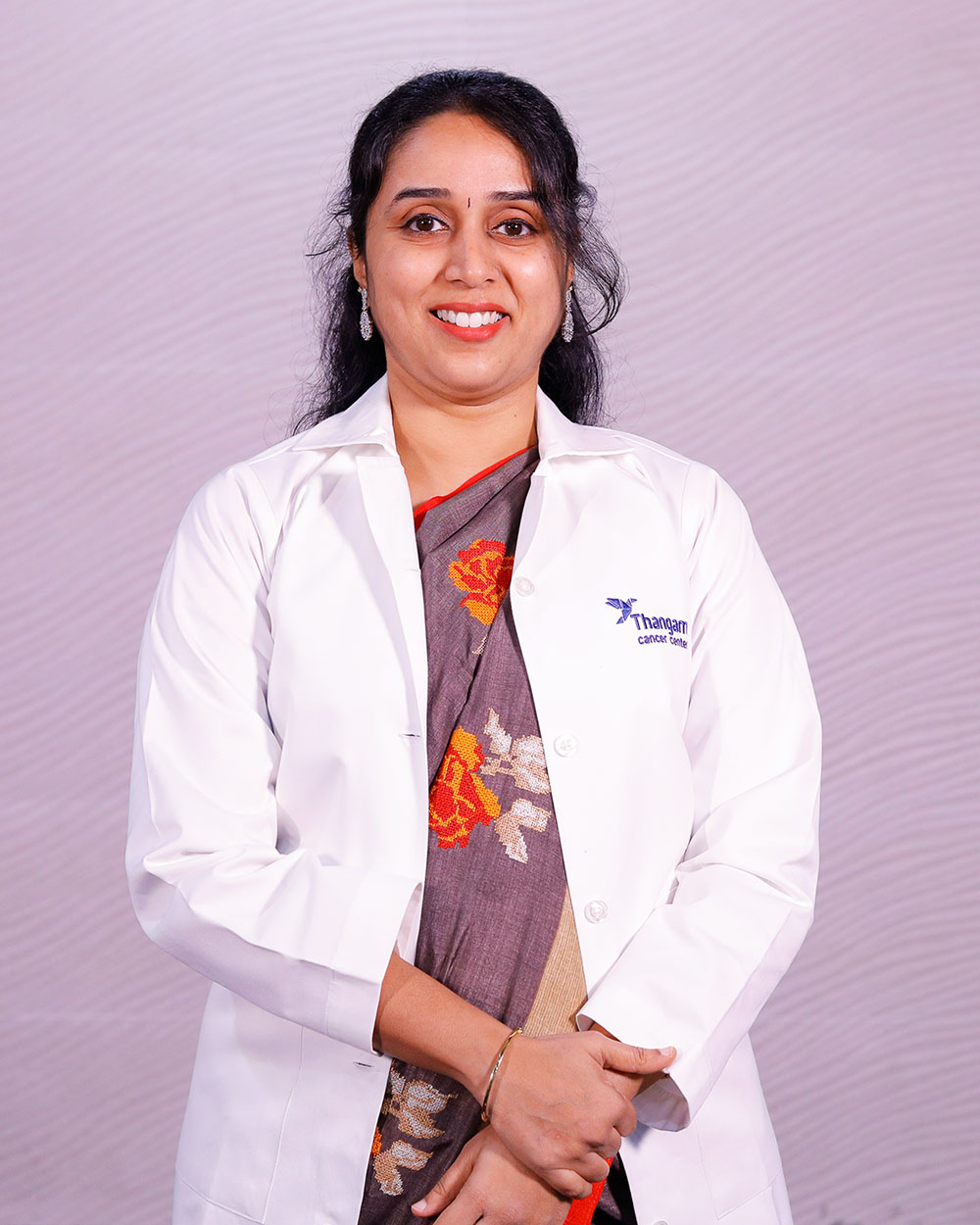Leukaemia
Leukaemia is the cancer of the bone marrow where blood cells are produced and are of multiple types but all are associated with the production of blood cells. In healthy individuals, immature stem cells develop in the bone marrow eventually developing as healthy and mature blood cells and they include:
- White blood cells are part of the immune system, comprising granulocytes (most commonly neutrophils) and mononuclear cells (B cells, T cells, NK cells and monocytes).
- Red blood cells help deliver oxygen throughout the body.
- Platelets help in blood clotting.
Leukaemia indicates the presence of tumour cells in blood-forming tissues and bone marrow and is divided into acute and chronic leukaemia depending upon the rate of growth of cancer cells. Both types of leukaemia result in an increased number of abnormal or immature blood cells in the body, making them incapable of carrying out their normal functions.
Symptoms of Leukaemia:
The different forms of leukaemic cancer exhibit multiple symptoms, sharing a few similarities.
Acute leukaemic conditions progress rapidly and are symptomatic while chronic leukaemic conditions progress slowly and are not symptomatic and often go unnoticed for years, in such cases the condition is diagnosed during a routine blood test during a physical exam or when visiting the consultant for other medical issues.
Common Leukaemia symptoms include:

Diagnostics Facilities
Advanced Cancer Diagnostics
Advanced Cancer Treatment
General Diagnostic Facilities
Types of Leukaemia:
Depending on the growth rate leukaemia is divided into:
- Acute leukaemia
- Chronic leukaemia
Acute leukaemia progresses faster since the abnormal blood cells do not reach their mature state and become incapable of performing normal functions. Chronic leukaemia progresses much more slowly compared to acute leukaemia because the abnormal cells are much low in number as compared to the normal cells.
The four main types of leukaemia are:
- Acute Myelogenous leukaemia
- Acute Lymphocytic leukaemia
- Chronic Myelogenous leukaemia
- Chronic Lymphocytic leukaemia

Acute Myelogenous Leukaemia (AML): AML affects myeloid stem cells, which develop into multiple types of mature blood cells, like red blood cells, white blood cells and platelets. AML occurs when a myeloid stem cell becomes cancerous, producing diseased cells. These immature cells do not function as required and multiply rapidly, crowding out healthy cells severely affecting the patient’s immune system, and leading to frequent infections.
AML is aggressive and can be particularly difficult to treat and is most common in adults with a five-year survival rate of less than 28%, which varies based on the subtype and cancer staging. AML also affects children irrespective of their age. AML subtypes are distinguished based on the differences the diseased cells exhibit compared to healthy cells and the development process. Specific chromosome abnormalities in these cancer cells and the disease’s genetic mutations also impact the prognosis.
Acute lymphocytic leukaemia (ALL): ALL is more common in children, having positive treatment outcomes. ALL can occur in adults irrespective of age, with treatments not yielding the desired results of late a majority of individuals who have developed ALL are under the age of 20, with a five-year survival rate of 68%.
The condition affects the white blood cells called lymphocytes and spreads rapidly creating immature blood cells instead of mature ones, weakening the body’s defence mechanisms and is also called Acute Lymphoblastic Leukaemia.
Chronic Myelogenous Leukaemia (CML): Chronic Myeloid Leukaemia (CML) primarily affects older adults above 55 years, with rare occurrence in children. CML, also referred to as Chronic Myeloid Leukaemia or Chronic Granulocytic Leukaemia, increases the white blood cell count, resulting in an enlarged spleen, and spreads slowly compared to other forms of cancer.
Chronic Lymphocytic Leukaemia (CLL): CLL typically affects older people and advances more slowly compared to other conditions of Leukaemic cancers. This form of cancer affects the white blood cells called lymphocytes, which strengthen your immune system by helping your body fight infection and enlarging lymph nodes, liver and spleen. Treatment approaches are decided based on the cancer staging and comprise a targeted therapy or a combined chemotherapy/immunotherapy.
Hairy Cell Leukaemia: White blood cells help the body fight infections and are of multiple types. Hairy cell leukaemia is a condition of the B cells or B lymphocytes, a type of white blood cell. In this form of cancer, the body produces too many unhealthy B cells, which become cancer cells and look hairy under the microscope.
These cells do not die as part of the natural life cycle and build up in the body causing symptoms and progress slowly. Hairy cell leukaemia cells keep living when healthy cells would die as part of the natural cell life cycle. The leukaemia cells build up in the body and cause symptoms, requiring immediate treatment usually with chemotherapy.
Screening for Leukaemia :
If you are experiencing cancer symptoms or have higher chances of acquiring cancer our specialist recommends screening you for Leukaemia cancer which includes:
The following tests will be performed to confirm the diagnosis of leukaemic cancer:
Cancer Staging:
Staging in Leukaemia cancer is based on blood cell counts and the accumulation of cancer cells in other organs and is divided into five stages comprising stages 0, I, II, III, and IV.

Treatment of Leukaemia :
The goal of leukaemia treatment procedures is to make the disease remain in remission and ultimately cure the patient free of cancer. In the case of leukaemia, complete remission usually means that the patient’s bone marrow has no microscopic evidence of the disease with normal blood cell counts.
Pathological analysis for studying acute leukaemia conditions like AML and ALL looks for immature blood cells called blasts, which make up less than 5% of healthy bone marrow cells in healthy individuals. In active leukaemia-affected individuals, the blast count is greater than 5%. After treatments once the patient reaches the remission phase periodical treatments are required to help the patient remain in that remission phase.
Patients who remain in continued complete remission for an extended period of time are considered cured, with extremely low possibilities of recurrence. The time taken to cure the patient from cancer conditions differs with the leukaemia types and cancer staging and is typically measured in years.
- Remission induction: With the objective to bring cancer into remission, this phase requires patients to be hospitalized, wherein they undergo intense treatments to eliminate leukaemia cells in the blood and bone marrow.
- Consolidation: This phase involves undergoing chemotherapy to kill the remaining cancer cells that survived the induction phase.
All patients undergo the two phases of remission induction and consolidation including a third phase of maintenance involving chemotherapy sessions. During the maintenance phase, patients receive lower doses of chemotherapy over a longer period of time to wipe out the remaining cancer cells.
Patients with chronic leukaemia can receive chemotherapy treatment, but in recent times targeted therapies are generally preferred to treat leukaemic cancers.
Targeted therapy for leukaemia:
Targeted therapy is designed to stop or hinder the growth of cancer cells by interfering with, or targeting, molecules or genes in cancer cells that help the disease develop and advance. Targeting these vulnerable cells, help in eliminating leukemic cancer cells. Patients undergoing cancer treatments experience minimal side effects.
Immunotherapy for leukaemia: Immunotherapy procedures are of multiple types and use the immune system to eliminate cancer, which varies with the procedure:
- Antibody-drug conjugates: Antibody-drug conjugates use an immune molecule (antibody) that seeks and binds with cancer cells and a cancer-killing drug is then directly delivered to those cells.
- Bi-specific monoclonal antibodies: These therapies use antibodies that seek and bind to both cancer cells and T lymphocytes, forming a bridge between these cells and triggering the immune cell to destroy the cancer cells.
- CAR T-cell therapy: In CAR-T cell therapy, patients are given T cells (a type of immune system cell) that have been engineered to recognize and attack cancer cells. The CAR T-cell therapy for treating leukaemia is currently approved by FDA for patients under the age of 25 with B-cell ALL and who experienced unsuccessful outcomes with at least two other cancer therapies. In addition to the FDA-approved treatments, multiple CAR T-cell therapy clinical trials are currently underway at MD Anderson for patients with various conditions of leukaemia.
Radiation therapy for leukaemia:
Radiation therapy uses high-energy beams to kill cancer cells while not considered the primary option for treating leukaemic cancers, used when the disease has affected the brain and central nervous system or is likely to spread to these areas.
Stem cell transplants for leukaemia:
When standard treatments for leukaemia do not yield desired results or result in failure, necessitates the need for the stem cell transplant approach. This approach is also adopted in high-risk cases where a cure or achieving a remission phase is highly unlikely with standard treatment approaches. This treatment is highly demanding and typically not given to older or unhealthy patients.
Stem cell transplantation is not a surgical procedure but is typically done when patients are in the remission phase. Most leukaemia patients receive an allogeneic stem cell transplant, in which stem cells from the blood (and in some instances the bone marrow) of a matched donor are infused into the patient. Stem cells collected from the newborn’s umbilical cord and placenta are used for cord blood transplant.
The patient receives chemotherapy/radiation therapy as needed to prepare the patient’s bone marrow to accept the transplanted stem cells. The donated stem cells are then intravenously infused into the patient’s bone marrow where they grow to produce healthy blood cells comprising red blood cells, white blood cells and platelets.
What is a Minimal Residual Disease (MRD)?
MRD refers to the small number of cancer cells present in the body after undergoing therapies for eliminating cancer, which increases the possibility of a relapse in patients. MRD is quantified using next-generation sequencing, cytogenetic studies or flow cytometry.
Doctors

Dr. Deepan Rajamanickam

Dr. Karthick Rajamanickam



